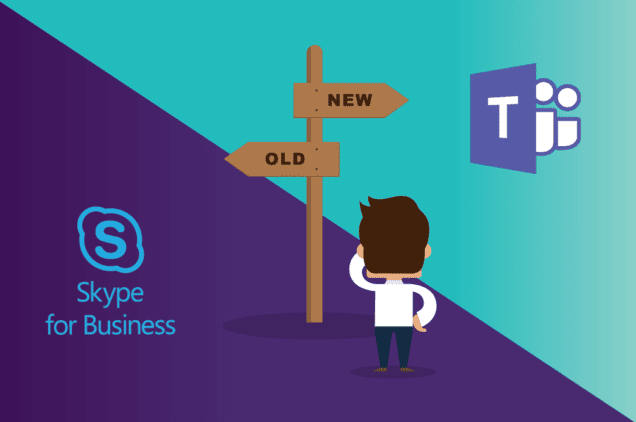- Home
- /
- Blog
- /
- 7 Steps to Migrate from Skype for Business to Microsoft Teams
7 Steps to Migrate from Skype for Business to Microsoft Teams
SFB to teams migration
Now that Microsoft has completely replaced Skype for Business with Teams, it's time to wave goodbye and move for a bittersweet process of SFB to Teams migration. For a long time, these two solutions have coexisted while offering the same main features, such as IM and calling capabilities. However, the switch to Teams is a huge step toward even greater connectivity, as it can be integrated with multiple applications from the Microsoft 365 stacks as well as with other popular applications. This SFB to Teams migration ensures users can leverage the full potential of enhanced communication and collaboration tools.
In this article, we would be going over thee step by step procedure for Migrate from Skype for Business to Microsoft Teams.
Step 1: Update Skype for Business Server
Step 2: Purchase Licenses
- Purchase Required Office 365 Licenses for all users. Every user who will use Teams PSTN needs a Phone System License
- Purchase Licensing for Dial-In Audio Conferencing if needed.
- Purchase Domestic or International Calling plans as needed.
Step 3: Configure Hybrid Connectivity
- Setup Azure AD Connect if not already in place.
- Setup Skype for Business Hybrid with Microsoft Teams
- Configure your on-premises environment to federate with Office 365.
- Configure your on-premises environment to trust Office 365 and enable shared SIP address space with Office 365.
- Enable shared SIP address space in your Office 365 organization.
In addition, if you have Exchange on-premises, then you may want to configure OAuth between your Exchange on-premises and Skype for Business Online environments.
Step 4: Port Phone Numbers to Microsoft
- Fill & Submit Port Orders for User Numbers
- Fill & Submit Port Orders for Service Numbers
- Agree on Cut-Over Date with Customer & Microsoft
Step 5: Move Users from Skype for Business On-Premises to Teams Only
- Move to Teams using Skype for Business Server Control Panel
- Assign Phone System and Calling Licenses to Users
- Confirm Users can make and receive calls after Porting
- Create Auto Attendants and Call Queues based on your Existing On-Premises Response Group or Auto Attendant configuration and business needs.
- Assign Service numbers to Call Queues and Auto Attendants & add users in Queues.
Step 6: Decommission Skype for Business
- Enable Teams Only Mode
- Update DNS records to point to Microsoft 365 or Office 365
- Disable split domain in the Microsoft 365 or Office 365 organization
- Disable the ability in on-premises to communicate with Microsoft 365 or Office 365
- Decommission Skype for Business On-Premises
Step 7: Setup Microsoft Teams Dial-In Audio Conferencing
- Assign users who need to setup Meetings Dial-In Conferencing licenses as needed.
- Request new Phone number or use one of the Ported Phone numbers to setup & Customize Dial-In Conferencing page
If you are looking for Microsoft Teams Consulting afresh or migrating from Skype for Business to Microsoft Teams or any other 3rd party platform – book a meeting with us and one of our Microsoft Certified Consultants would love to help you out. We can assist with SFB to Teams migration or any other platform transition, helping you set up the ultimate collaboration platform at your organization hassle-free.
Last Updated 1 year ago ago
Favad Qaisar is Founder & CEO of Communication Square LLC. He is a Microsoft Certified Expert and a Charter Member. In the past he has worked with Microsoft Teams Product Group and has also Co-Authored Microsoft Certification Exams.
Beyond work he loves playing Chess.

